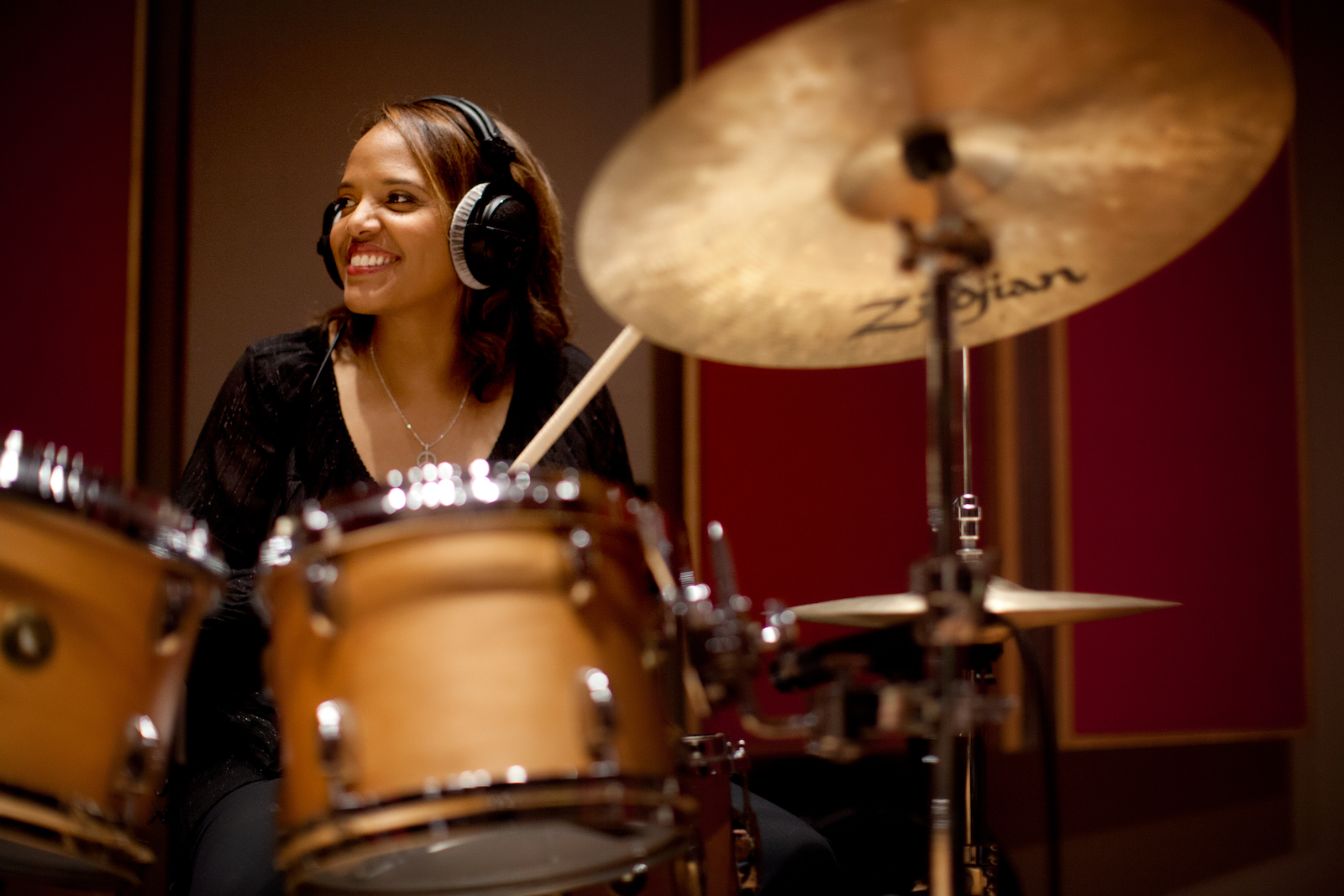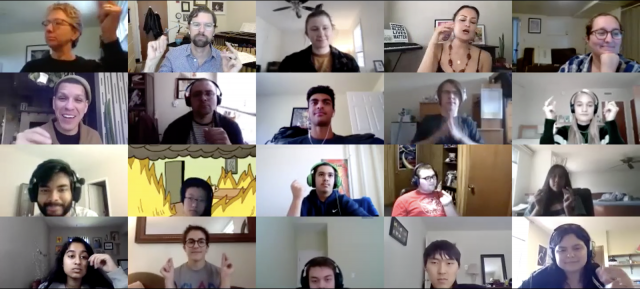In a Virtual World, Students Get Personal with Visiting Artists
Artists from Los Angeles to London are providing innovative learning opportunities for ARHU students.
By Jessica Weiss ’05

On Oct. 2, jazz drummer Terri Lyne Carrington discussed her career and playing style with students in the percussion and jazz studies programs. Photo by Jacobs Carringtom.
When sophomore music education major Lauratu Bah ’23 received an email in September about an upcoming virtual clinic for UMD percussion and jazz students by drummer Terri Lyne Carrington, she didn’t know if she would be able to make it. Bah, who is specializing in jazz saxophone, had an exam the same day as the clinic, and had planned to use the hour to study for it.
But when she read more about Carrington, a Grammy-winning bandleader and the founder and artistic director of the Berklee Institute of Jazz and Gender Justice, Bah was so inspired that she decided to rearrange her schedule.
“I signed up to go and I’m really happy I did,” said Bah. “She had a lot to say—a lot of really good things to say. It really stuck with me. And I aced my exam.”
Carrington’s presentation, which focused on a lack of gender equity within the jazz community, resonated deeply for Bah, who said she’s often been the “only girl” since her early days of practicing the saxophone.
The clinic, put on by the Artist Partner Programs at The Clarice Smith Performing Arts Center, is among dozens of opportunities for performing arts students to learn from visiting artists this fall—virtually. Throughout the Fall 2020 semester, 26 artists or groups of artists from across five time zones will make 46 visits to UMD classes in the College of Arts and Humanities.
Erica Bondarev Rapach, acting executive director of The Clarice, said the virtual learning environment brought on by the COVID-19 pandemic has provided more opportunities for performing arts students to “go deeper” with artists this semester.
“With no in person performances, we’re able to more easily engage artists to enhance students’ education and experience,” she said. “Artists aren’t bound by geography, time or space anymore. With access to the internet, you can connect.”
On a Friday morning in September, members of the London-based theater and dance collective Far From The Norm led 30 undergraduate and graduate students from the School of Theatre, Dance, and Performance Studies through an hour-and-a-half long hip hop class via Zoom. Led by the company’s artistic director, Botis Seva, the class was a mix of calisthenics and improvisational prompts.
Despite taking place over Zoom, Dance Performance and Scholarship Professor Patrik Widrig said the class was “really intimate.”
“I never believed in this sort of thing—teaching dance through a screen a continent away was almost unthinkable to me,” Widrig said. “As dancers we have to be with each other and feel each other's energy and be in the room together. But now we’re forced to be online and we’re all making the best of it and it’s working surprisingly well. People are really getting something out of it and learning.”
After the class, Seva was also interviewed by Guest Dance Curator Tariq O’Meally in a virtual public event, “Hip-Hop in the White Space,” which focused on what it means to make a dance about hardship and struggle under the gaze of whiteness.
The Artist Partner Programs is organizing a total of nine public or semi-public events throughout the semester, including talks, performances, film screenings and more.
Earlier this week, the Los Angeles-based Chicano band Las Cafeteras presented a family performance—via video—for Latinx communities around College Park in celebration of Hispanic Heritage Month.

Members of Las Cafeteras visit MUSC289I: “The Power of Music Performance in Social Engagement.”
Members of the band also visited MUSC289I, “The Power of Music Performance in Social Engagement,” to discuss “music and movement-building.” Senior Lecturer Lee Hinkle, who teaches the course, said the band’s visit tied in perfectly with a current unit on anthems and social engagement. Las Cafeteras has been widely featured for their representation of the classic Mexican anthem "La Bamba,” in which they mix the traditional musical style of son jarocho with hip hop.
The class was highly interactive and dynamic, with members of the band sharing personal stories, playing music and engaging students through the Zoom chat.
“It’s amazing how impactful these experiences are virtually,” Hinkle said. “Because the artists are at home and have access to everything in their repertoire, students can engage them in new and unique ways.”
For information on the 2020–21 season at The Clarice, click here.
